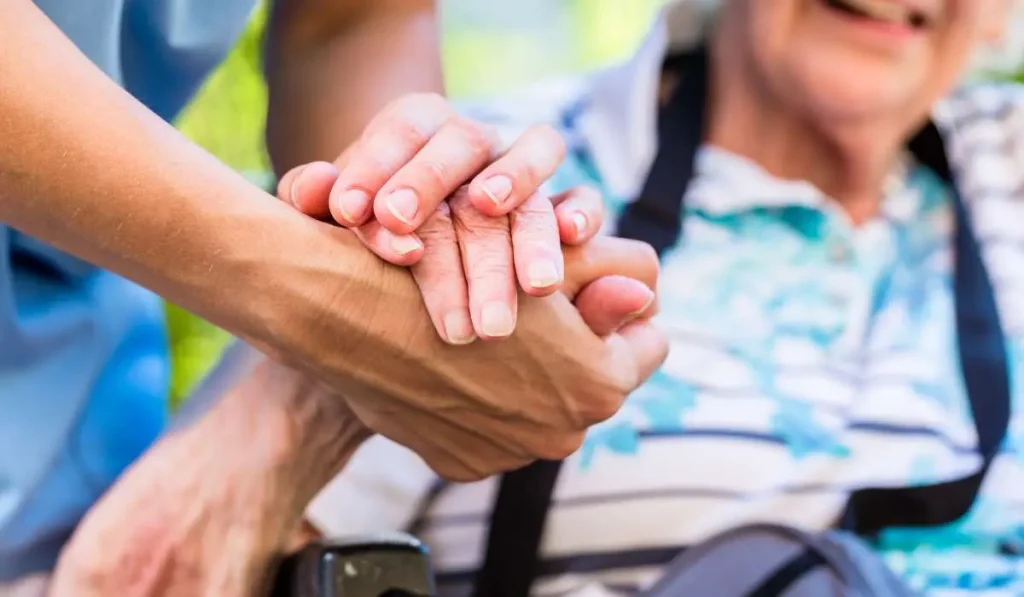Hey there, friends! Have you ever stopped to wonder who’s behind the scenes, tirelessly taking care of our loved ones when they need it the most? Well, today we’re going to shine a spotlight on the unsung heroes of our families and communities—the caregivers. And not just any caregivers, but specifically, we’re going to chat about the gender that overwhelmingly takes on this role. Spoiler alert: it’s the ladies!
The Current Landscape of Caregiving
Let’s dive into some numbers, shall we? When we peek into the world of caregiving, we find that a staggering number of caregivers are women. In fact, research tells us that up to 81% of caregivers are female. That’s right, more than three-quarters!
But it’s not just about the numbers. It’s about the stories, the dedication, and the love that these women pour into their caregiving roles every single day.
Now, don’t get me wrong, the fellas are stepping up to the plate more than ever before. The ranks of male caregivers are growing, and that’s a beautiful thing. It’s all hands on deck when it comes to caring for those who once cared for us, right?
But even with more guys getting involved, the caregiving field is still very much a lady’s domain.
So, why is it that women are so often the ones donning the caregiver’s hat? Is it something in the water? Is it written in the stars? Not quite. It’s a bit more complicated than that, and it’s deeply rooted in our society’s fabric.
Why Women Dominate the Caregiving Field
Ever wondered why it seems like your aunt, sister, or mom is often the one who steps in to care for grandpa or the little ones? Well, it’s not just your family; it’s a common scene in many households. The reason? It’s partly because society has long cast women in the role of the nurturer. From the time they’re little girls, many women are encouraged to be the caretakers, the ones who soothe the scraped knees and offer a shoulder to cry on.
But it’s not just about playing a role; it’s about the heart and soul women pour into caregiving. They often spend more time than their male counterparts in these roles, and it’s not just a few extra minutes here and there. We’re talking up to 50% more time dedicated to caring for a family member or friend. That’s a whole lot of extra love and patience!
Now, this isn’t to say that men can’t or don’t provide care. They do, and they’re awesome at it. But historically and culturally, women have been the go-to for this kind of support. And while times are changing, and more men are embracing caregiving roles, women continue to be the primary caregivers in many parts of the world.
The Impact of Media Representation on Caregiving Gender Roles
Ever noticed how your favorite TV shows and movies often depict women as the primary caregivers? Whether it’s a mom nursing a sick child back to health or a daughter taking care of her aging parents, these images are ingrained in our minds. And guess what? They’re not just figments of Hollywood’s imagination. They reflect a reality where women are often the ones providing care.
Media, in all its forms, has a powerful influence on how we perceive the world around us. It shapes our understanding of roles and responsibilities, including who we see as caregivers. More often than not, it’s women who are portrayed in these roles, reinforcing the idea that caregiving is primarily a woman’s job.
But here’s the thing: while it’s true that many caregivers are women, it’s not exclusively a woman’s role. Men are also caregivers, providing love, support, and care to their loved ones. However, their stories are often underrepresented in the media, which can perpetuate stereotypes and overlook the valuable contributions of male caregivers.
So, the next time you’re watching a movie or a TV show, take a moment to notice who’s portrayed as the caregiver. Is it always a woman? Or do you see men stepping into this role as well? Recognizing these patterns can help us challenge stereotypes and appreciate the diverse range of people who take on caregiving roles.
The Experiences of Male Caregivers
In the realm of caregiving, men are often the unsung heroes, quietly stepping into roles that society has traditionally reserved for women. But as we peel back the layers, we discover that the number of male caregivers is on the rise, challenging stereotypes and reshaping our understanding of what it means to care.
Male caregivers bring their own unique set of skills, perspectives, and challenges to the table. They navigate a path less traveled, often without the same level of support or recognition that their female counterparts receive. Yet, they provide essential care, love, and support to their loved ones, proving that caregiving knows no gender.
One of the biggest hurdles male caregivers face is the lack of visibility. With fewer stories of male caregiving in the media and society’s lingering stereotypes, men may feel isolated in their caregiving roles. They might also struggle with accessing resources or support groups, which are often geared towards women.
However, the narrative is slowly changing. More stories of male caregivers are coming to light, showcasing their dedication, compassion, and the positive impact they have on the lives of those they care for. These stories not only help to break down stereotypes but also offer much-needed support and recognition for men in caregiving roles.
As we continue to advocate for all caregivers, it’s crucial to remember that caregiving is a human responsibility, transcending gender lines. By acknowledging and supporting the contributions of male caregivers, we can foster a more inclusive and supportive caregiving community for everyone.
The Psychological and Emotional Toll of Caregiving
Caregiving is a labor of love, but let’s be real—it’s also a tough gig. Whether you’re a woman or a man in this role, the emotional and psychological weight of caregiving can be as heavy as the physical demands. It’s like carrying a backpack filled with responsibilities, worries, and the constant pressure to do everything right.
Imagine juggling work, personal life, and the needs of someone who depends on you. It’s a balancing act that requires a superhero level of strength. Caregivers often find themselves riding an emotional rollercoaster, with highs of heartfelt moments and lows of sheer exhaustion. And sometimes, that rollercoaster can take a toll, leading to what’s known as caregiver burnout—a state of physical, emotional, and mental exhaustion.
Burnout doesn’t just sneak up on you; it can hit like a ton of bricks. You might feel overwhelmed, irritable, or even detached from the person you’re caring for. It’s a sign that you’ve been putting your own needs on the back burner for too long. And here’s the kicker: women, who make up the majority of caregivers, are especially at risk because they often take on this role in addition to other family and work responsibilities.
But here’s the good news: recognizing the signs of burnout is the first step to tackling it. It’s about giving yourself permission to take a break, to ask for help, and to remember that taking care of yourself isn’t selfish—it’s necessary. After all, you can’t pour from an empty cup.
The Future of Caregiving and Gender
We can’t help but hope for a world where the responsibilities are more evenly shared between men and women. Imagine a society where caregiving is recognized not just as a duty but as an honor, and where every caregiver is supported, regardless of gender.
The winds of change are already blowing, with more men stepping into caregiving roles and society slowly but surely shedding outdated stereotypes. We’re beginning to understand that caregiving requires a diverse set of skills and qualities that both men and women possess. It’s about empathy, patience, and resilience—traits that know no gender.
In this future, we also see a world where support systems for caregivers are robust and readily available. From workplace policies that offer flexible hours and caregiving leave to community programs that provide respite care and emotional support, the future looks bright for those who give so much of themselves to care for others.
And let’s not forget technology, which is already playing a role in transforming caregiving. From apps that help manage medication schedules to online support groups that connect caregivers around the globe, the digital age is empowering caregivers in ways we’ve never seen before.
As we wrap up this conversation, let’s carry with us a sense of gratitude for all caregivers and a commitment to support them in every way we can. Whether you’re a caregiver yourself or you know someone who is, remember that it’s a journey best traveled together.
Thank you for joining me on this exploration of caregiving and gender. It’s been a real pleasure to share these thoughts and stories with you. Here’s to all the caregivers out there—you’re the true heroes in our midst. Keep shining bright!


